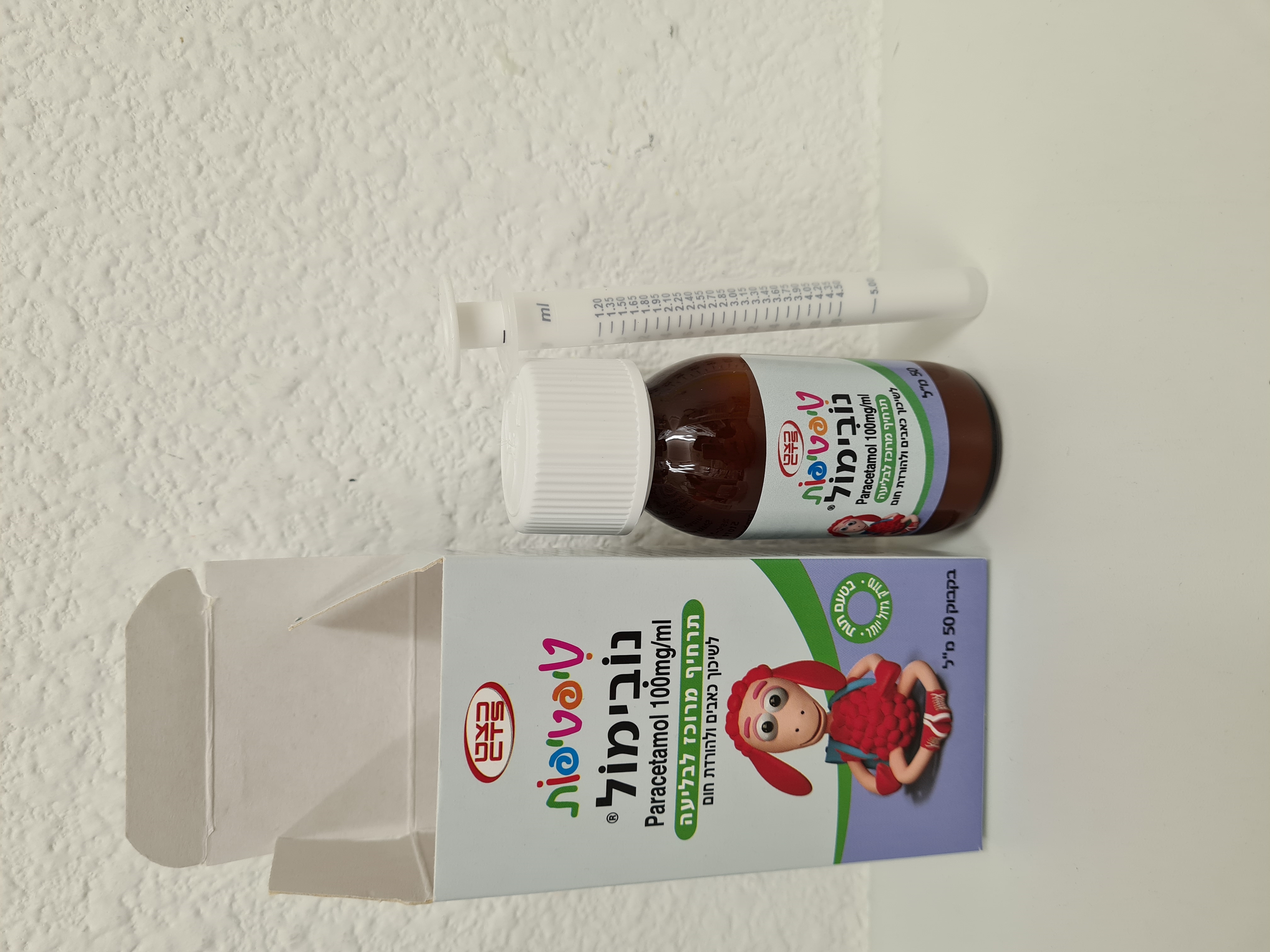Quest for the right Drug

טיפטיפות נובימול TIPTIPOT NOVIMOL (PARACETAMOL)
תרופה במרשם
תרופה בסל
נרקוטיקה
ציטוטוקסיקה
צורת מתן:
פומי : PER OS
צורת מינון:
תרחיף : SUSPENSION
עלון לרופא
מינוניםPosology התוויות
Indications תופעות לוואי
Adverse reactions התוויות נגד
Contraindications אינטראקציות
Interactions מינון יתר
Overdose הריון/הנקה
Pregnancy & Lactation אוכלוסיות מיוחדות
Special populations תכונות פרמקולוגיות
Pharmacological properties מידע רוקחי
Pharmaceutical particulars אזהרת שימוש
Special Warning עלון לרופא
Physicians Leaflet
Pharmacological properties : תכונות פרמקולוגיות
Pharmacodynamic Properties
5.1 PHARMACODYNAMIC PROPERTIES Mechanism of action Paracetamol is a para-aminophenol derivative that exhibits analgesic and anti-pyretic activity. It does not possess anti-inflammatory activity. Its mechanism of action is believed to include inhibition of prostaglandin synthesis, primarily within the central nervous system. It is given by mouth or rectally (suppositories) for mild to moderate pain and to reduce fever. Clinical trials No data available
Pharmacokinetic Properties
5.2 PHARMACOKINETIC PROPERTIES Absorption Paracetamol is rapidly and almost completely absorbed from the gastrointestinal tract with peak plasma concentration occurring about 10 to 60 minutes after oral administration. Food intake delays paracetamol absorption. Distribution Paracetamol is distributed into most body tissues. Binding to the plasma proteins is minimal at therapeutic concentrations but increases with increasing doses. Metabolism Paracetamol is metabolised extensively in the liver and excreted in the urine mainly as inactive glucuronide and sulphate conjugates. The metabolites of paracetamol include a minor hydroxylated intermediate which has hepatotoxic activity. This intermediate metabolite is detoxified by conjugation with glutathione. However, it can accumulate following paracetamol overdosage (more than 150 mg/kg or 10 g total paracetamol ingested) and, if left untreated, can cause irreversible liver damage. Paracetamol is metabolised differently by infants and children compared to adults, the sulphate conjugate being predominant. Excretion Paracetamol is excreted in the urine mainly as the inactive glucuronide and sulphate conjugates. Less than 5% is excreted unchanged. The elimination half-life varies from about one to three hours. Approximately 85% of a dose of paracetamol is excreted in urine as free and conjugated paracetamol within 24 hours after ingestion.

שימוש לפי פנקס קופ''ח כללית 1994
Mild to moderate pain, antipyretic
תאריך הכללה מקורי בסל
01/01/1995
הגבלות
תרופה שאושרה לשימוש כללי בקופ'ח
מידע נוסף
עלון מידע לרופא
05.08.20 - עלון לרופאעלון מידע לצרכן
25.04.22 - עלון לצרכן אנגלית 25.04.22 - עלון לצרכן אנגלית 25.04.22 - עלון לצרכן עברית 25.04.22 - עלון לצרכן עברית 25.04.22 - עלון לצרכן ערבית 25.04.22 - עלון לצרכן ערבית 24.08.23 - עלון לצרכן אנגלית 01.09.23 - עלון לצרכן עברית 01.09.23 - עלון לצרכן ערבית 14.07.24 - עלון לצרכן עברית 01.08.24 - עלון לצרכן אנגלית 01.08.24 - עלון לצרכן ערבית 05.08.20 - החמרה לעלון 12.09.13 - החמרה לעלון 14.07.24 - החמרה לעלוןלתרופה במאגר משרד הבריאות
טיפטיפות נובימול